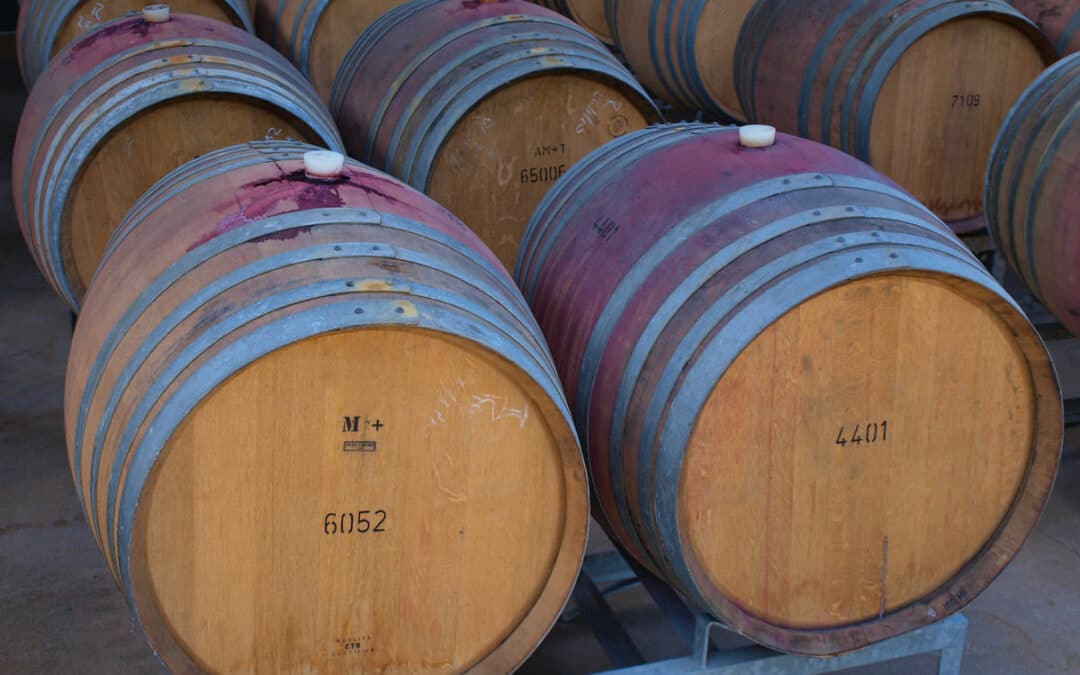As you peruse the wine aisle, you see hundreds or even thousands of those beautiful wine bottles with eye-catching labels and sometimes whimsical or foreign names. Have you ever wondered how the superb deep red, pink, or white wines make the transition from the vineyards to fermentation to bottling before shipping directly to consumers and retailers?
At Hill Family Estate, one of the top Napa Valley wineries, the process follows a distinct protocol that ensures each wine has achieved its highest level of quality before bottling begins.
Timing the Bottling Process
Although the time between grape harvest and bottling might vary among Napa Valley wineries, Hill Family Estate, one of the premium Yountville wineries, abides by the following general sequence.
For example, the time when each varietal is bottled following harvest and fermentation depends on the type of grape and the time it takes to reach specific target attributes.
Whites and Rosé
- Crisp white wines like Albariño and Sauvignon Blanc are bottled early in the year, typically six months after the grapes have been harvested. Before bottling, the wines have been aging in stainless steel tanks. Rosés are bottled during a similar time frame.
After bottling, the bottles are capped with screw tops to preserve the wine’s freshness and acidity.
- Hill Family Estate Chardonnays are aged in oak barrels approximately ten months before they are ready for bottling.
Red Wines
- Red wines like Merlot, Syrah, and Pinot Noir spend about sixteen months in barrels to achieve the target flavor and acidity levels. The bottles are sealed with cork.
- Bolder red wines like Cabernet Sauvignon, Malbec, and Red Blends at Hill Family are usually aged 18 to 24 months before bottling. The winemaker will check the barreled wines continually to determine whether they are ready for bottling.
Bottling: Sequence of Events
When the winemaker determines a wine is ready for bottling, a bottling date is established, and the glass bottles, corks, and labels must be in place. Since carrying huge inventories of supplies can be impractical and expensive, Hill Family Estate allows enough lead-time to ensure all components are in place before the bottling date. Orders for these supplies are usually placed three to four months in advance.
Bottling Day arrives, and the supplies are in place. The wines are racked from the barrels into tanks that are connected to the bottling line with large hoses.
The empty bottles, meanwhile, are placed on a conveyor, then conducted through an argon gas sparging process that removes contaminants and eliminates the potential for oxidation. The glass bottles are then conveyed to the filling equipment, filled, then corked or capped before labeling and placed by hand into the appropriate case boxes.
Quality Control is vital during this process. Napa Valley wineries employ trained professionals to oversee and inspect each bottle to ensure that each bottle is appropriately filled, corks are seated correctly, and labels are perfectly applied. Rejected bottles will be pulled from the batch.
Once palletized and stacked, the wine cases head to temperature-controlled warehousing to await shipment to their next destinations.
Hill Family Estate, One of the Premier Napa Valley Wineries Yountville’s Premier Wineries
Since producing their inaugural vintage in 2001, Hill Family Estate has blossomed into one of the most prestigious Napa Valley wineries. The winery combines the talents of legendary vineyard manager, Doug Hill, winemaker extraordinaire, Alison Doran, and the marketing and management expertise of Ryan Hill and other members of the Hill Family. From vineyard management and harvest to exceptional winemaking, the organization presents a broad range line of highly regarded wines.
As Napa Valley wineries reopen for wine tastings, be sure to schedule your visit to Hill Family Estate, one of the top Yountville wineries.

